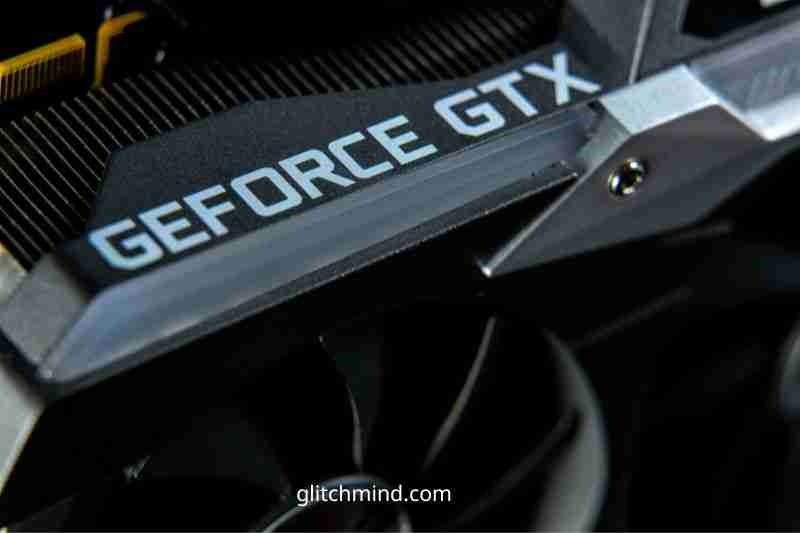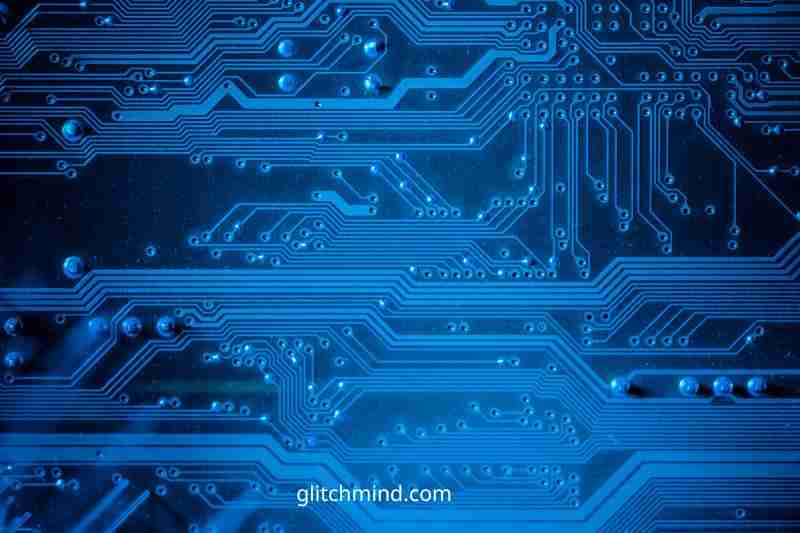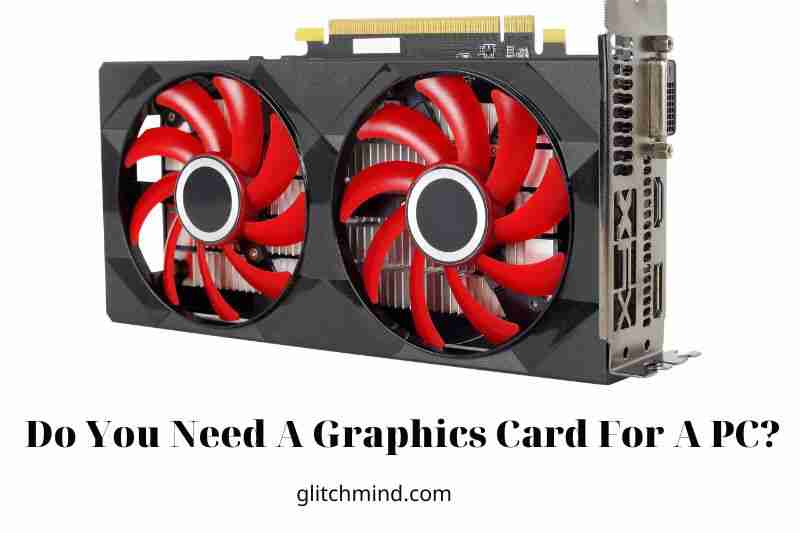Do You Need A Graphics Card For A PC? There is no one definitive answer to this question. Some people might need a graphics card for both their PC and graphics card, while others might only need one type of graphics card. Ultimately, it is up to the individual owner of the PC to decides what features they need to rely on their computer for.
Benefits of a dedicated graphics card
I want to use this opportunity to highlight a few advantages of installing graphics cards.
While installing a graphics card requires more power from your power supply, as long as you have adequate headroom in the power supply’s wattage output, the power supply will last just fine.
A graphics card will likely boost frame rates for demanding applications and offer you a smoother-running system.
Working with graphics-heavy applications will help your computer to manage them more readily, resulting in a cooler CPU.
Graphics cards are now more diverse than ever, making it simpler to choose one that fits your budget. In most circumstances, even a low-cost graphics card outperforms an integrated graphics processing unit.
This is because the GPU is a separate component with its memory on the card that is only used for graphics.
A graphics card also includes a cooling fan and heatsink assembly for the GPU to help it function at lower temperatures under stress.
In another post, I cover how to speed up the graphics card fans.
If you are considering acquiring a secondhand graphics card, do several tests beforehand. I also discuss how to determine whether or not a GPU is operational.

Do You Need A Graphics Card For A PC?
No, not always. A graphics card is not essential for users to operate their PC. In reality, many of the onboard integrated graphics will be able to help the user with a range of different activities. Word processing, online browsing, and emailing will not need the use of a graphics card.
Many computers in a standard office setting are constructed with the basic needs to facilitate a rapid workflow and do not often contain upgrades such as a graphics card.
Playing games without a dedicated graphics card inside the computer is still feasible. Many older and web-based browser games will be playable with the onboard integrated graphics, while newer 3D-generated titles will need the installation of a graphics card.
How to Choose the Right Graphics Card?
A few key variables should help you narrow down your options and choose the best card for you.
1. Budget
This is one of the most critical factors when selecting a GPU. Estimate the cost of your complete construction and then use the remaining funds to purchase your graphics card. If you don’t have as much as you’d intended, see if you can substitute another component with something less expensive to put the additional money toward your card.
2. Performance
Almost any GPU will do if you’re merely writing in a word processing tool. If you want to stream 4K material, you should search for something with a few more choices and a bit more power. And If you want to utilize engineering applications or play games with high graphics demands, you may need to get a very high-end card.

3. Type of Build
Some GPUs, for example, will not fit in mini ATX systems. Some of the newest cards, such as the RTX 3090, are huge and may not function in all cases, depending on what is installed.
4. Type of PSU
Each card has distinct needs, and higher-end cards often use much more power. If your present power supply isn’t rated high enough to handle the card you want, you’ll have to choose a card that consumes less power or buy a new power supply that can keep up with the GPU’s needs.
Once you’ve determined the answers to these questions, you can begin narrowing down your options and delving into the specifics of what distinguishes one card from another.
When should you consider a dedicated graphics card?
There are many factors to consider when determining whether or not to purchase a dedicated graphics card. First, what kinds of graphically intense tasks are you planning?
You probably don’t need a graphics card if you use your computer for email, online surfing, and word processing. The graphics on your PC will suffice.
However, a graphics card can make a significant difference if you enjoy gaming, video editing, image editing, 3D graphics modeling, or CAD modeling. A graphics card can process visuals far faster than a CPU, producing smoother, more realistic images.
It is also critical to determine the kind of graphics card you need. A low-cost graphics card should suffice if you plan to do some light gaming.
However, if you plan on spending a lot of time gaming, playing more serious games, or editing videos, you’ll need to invest in a higher-end card.
Read also: How To Remove Graphics Card? Tips New 2022

What Should I Look for When Purchasing a Graphics Card?
When choosing a graphics card, there are a few factors to consider. Some of these are listed below.
Examine the card’s memory capacity. You will have more difficulty playing games at higher resolutions if it does not have at least 6 GB of RAM. If gaming visuals are essential to you, you should get something with more than 6 GB of RAM.
Memory speed is critical since quicker memory implies the card performs better.
Consider what ports you need, and then examine the cards you are contemplating purchasing. They may have varying numbers and kinds of ports. Knowing what types you favor ahead of time might help you eliminate or add cards to the list.
Check to see whether the card is compatible with the applications you want to use with it. Some VR headsets need or recommend specific cards to function. It will be a waste of money if you buy a card that will not operate with the applications for which you are acquiring it.
Read reviews to find out what type of performance the card can provide. The procedure may be a bit complicated since the way the other components heavily influence a GPU function in a build.
Look for a reviewer using the same CPU and motherboard or a similar combination. Knowing what the card can do will help determine whether it meets your needs.
Workloads That Need a Graphics Card (discrete GPU)
1. Video Editing
Technically, integrated graphics may be used in video editing, mainly if they speed up the video preview on your editing timeline.
However, you’ll need a far faster graphics card for GPU-accelerated rendering and video encoding than any existing GPU.
2. 3D Modeling, Rendering, Animation, VFX
No pleasant words describe the transition from video editing to professional 3D rendering situations.
Modern GPUs are only similar to a GT 1030 and are unsuitable for professional 3D rendering, modeling, or CAD software like Blender, Cinema 4D, or Solidworks.
To get high-quality results in a reasonable length of time, many applications need strong mid-to-high-end graphics cards.
3. Graphic Design, Illustration, Photo Editing, Drawing
Graphic Design, Illustration, and Photo Editing may function OK on an iGPU. Still, for more sophisticated tasks in these areas, you’ll have a far more efficient experience working on a dedicated higher-end Graphics Card.
So, if you’re working on more sophisticated projects in Photoshop, Illustrator, Lightroom, or any other Adobe Creative Cloud application, a (mid-range) GPU will keep your viewport fluid.
4. Compositing, Motion Design, Post-Production
Compositing and Motion Design are other tasks that require a dedicated graphics card. After Effects, Nuke, and Fusion are popular compositing and post-production tools with high GPU performance requirements.
5. Game Development
You may build games or work on visually demanding apps and software, even if you are not a player. You’ll also need a strong GPU in this situation. Unreal and Unity3D are popular game and app development tools that will operate substantially faster with a dedicated GPU.
6. Multi-Monitor Setups
Also, if you want to connect many high-resolution displays, you may not have enough display connections on your motherboard and need to use a dGPU to drive all your Monitors.
Read also: How To Upgrade Graphics Card? Tips New 2022

FAQs
1. What if you don’t own a graphics card?
If you don’t have a graphics card, you’ll need an iGPU to view some visuals and movement since the CPU may still assist the computer in calculating the pixels. However, suppose you attempt to conduct graphically intensive tasks with your PC. In that case, you may experience substantial latency (for example, if you try to play a game that the CPU cannot display).
2. Do I need a graphics card for music production?
A graphics card is required for music creation to observe the pixels update in line with the notes, beats per minute (BPM), and so on. Most music production applications will not work without them.
3. What else may graphics cards be utilized for besides gaming?
Graphics cards are used to show images on your computer and are particularly vital for high-performance computing activities like bitcoin mining, video editing, and image editing software like Photoshop. Many of these ranges have similar needs to gaming, but you may use a reasonably inexpensive one efficiently.
4. Can a PC be started without a GPU?
You can boot a PC without a GPU, but you won’t see a display unless you have an iGPU. As in, you can turn it on without either, but you won’t be able to see anything.
5. Are there any computers that do not have graphics cards?
Every computer you buy at a conventional shop will include a graphics card since it would not be able to produce pictures otherwise. Examine the label for a complete list of the components. If no graphics card is specified, it is most likely an integrated GPU rather than a separate GPU.
6. What Is the Difference Between Integrated and Standalone GPUs?
Integrated GPUs are integrated onto motherboards. They often use less power but will not provide the same results as a high-end standalone card.
When most people think of graphics cards, they see standalone GPUs. In most situations, they are a separate component that requires fans and a power connection. They vary from less than $100 for a card that can show word processing applications but cannot run games to hundreds of dollars for a card that can run complicated CAD programs and cutting-edge games.
Conclusion
As you can see, operating a PC without a graphics card is pretty viable if you do not need one. Why spend hundreds of dollars on something you’ll never use if you’re not going to be gaming or performing some graphical design/video work? There’s just no point!
Why not get extra RAM and a faster CPU with integrated graphics instead?
So, if you’re putting together a new “homework/work” computer, you can be comfortable that you won’t be wasting money on items you won’t use. Modern GPUs are more than capable of performing all fundamental activities. If you discover it isn’t strong enough for what you want, you can always install a dedicated GPU!

